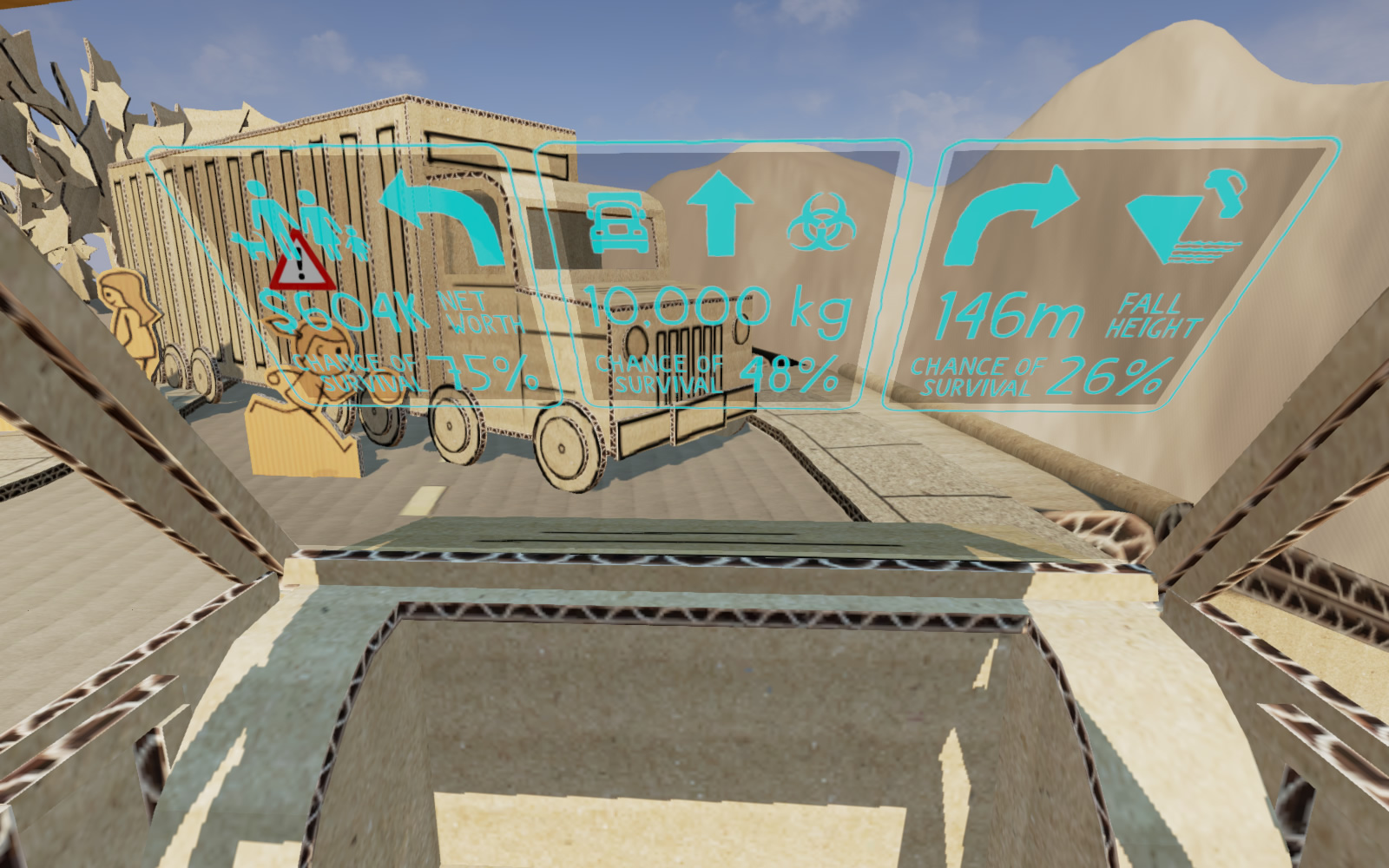image: Cardboard Car Crash, Vincent McCurley, National Film Board of Canada Vincent McCurley, National Film Board of Canada
We had an opportunity to connect with these contributors to the new VR Village at SIGGRAPH 2015: Vincent McCurley, National Film Board of Canada; Nick Whiting, Lead VR Engineer, Epic Games; Sylvain Chagué and Caecilia Charbonnier, Artanim; David Nahon, Director of the Immersive Virtuality (iV Lab) at Dassault Systèmes; Eric Janszen, VirZOOM Co-Founder and CEO; Jeff Hazelton, Co-Founder/ CTO of BioLucid; Vincent Morisset, director and founder of AATOAA studio; Stuart White, Head of 3D and VFX Supervisor at Fin Design + Effects; and Ben Tan, Technology and Innovation Director at Digital Arts Network. Following is a Q&A of what excites them in the field (and at the conference) from their various viewpoints and disciplines (you can read their bios below).
SIGGRAPH 2015 (S2015): Tell us what you are sharing in the VR Village and any surprising details you might wish to share about it. Also – what inspired you to create this work?
Vincent McCurley, National Film Board of Canada (VMc): Cardboard Car Crash is a VR vignette that examines the ethics around self-driving cars in situations where collisions are unavoidable.
It started as an experiment to understand the production workflows of interactive VR, but grew into a narrative experience – I guess that’s what can happen inside a storytelling organization.
Nick Whiting, Lead VR Engineer, Epic Games (NW): We’re showing of a piece that we call “Showdown,” which was originally created to test the limits of what we could pull off at modern VR resolutions and framerates. The demo was originally conceived to debut Oculus’s Crescent Bay headset and NVIDIA’s GTX 980. It throws you into the middle of a battle in the streets between soldiers and a giant mechanical opponent, complete with all of the requisite explosions and actions you would expect!
While we were largely focused on pushing the technological limits for the demo, we were actually creatively constrained. We only had about five weeks from start to finish to pull off the demo, with a content team of two, and a little bit of borrowed time from others. This meant that we had to adapt content from other demos that we had made previously, namely “Samaritan” and “Infiltrator.” We also had limited animation, which meant that we had to take about seven seconds worth of actual content, and stretch it to fill the two-minute demo time. So, we did the most obvious thing, and slowed down all the content to make seven seconds last for two minutes! The result is a happy discovery, born of practical limitations: by slowing down the action all around you, we were able to accentuate the details of the scene.
Sylvain Chagué and Caecilia Charbonnier, Artanim (SCCC): At VR Village, we will showcase our Real Virtuality platform that combines VR headsets with motion capture. Users of the system will be able to freely move in the capture space, see other users and interact with them or with physical elements. They will have the unique opportunity to visit an Egyptian tomb, created by our partner Kenzan, before it was looted centuries ago using a virtual torch to illuminate their surroundings.
David Nahon, Director of the Immersive Virtuality (iV Lab) at Dassault Systèmes (DN): The Project is called “Never Blind in VR.” It’s actually an “Augmented Virtuality” experience where a user is wearing an Oculus and sees some elements of the real world through a Kinect sensing his body and his surroundings. Some further details can be discovered here.
In my team, we’ve been creating software and content in VR for two decades, mostly using CAVEs. Based on the fact that HMDs are not very much used in industry, while CAVEs are, we wondered why and realized that HMDs are anti-social: they cut the user from other people and from the real world. We wanted to recreate the social relation people have in the reality when immersed with an HMD.
Eric Janszen, VirZOOM Co-Founder and CEO (EJ): We’re showing our VirZOOM Exercise Game Controller and VZ game experience.
The idea has its roots in a vision I had 30 years ago while on an exercise bike in the basement fitness room. To make it more interesting I imagined I was pedaling through a 3D wireframe tunnel. Rather than a little red LED that light up as you climb hills I imagined a tunnel that branched two ways to force you to you make quick decisions that result in either riding up or down hill. This branching game play distracts you from the fact you’re on an exercise bike and puts you through an interval training cycle. VR tech has taken all this time to catch up to this basic concept. But not until I met up with my friend Eric Malafeew in 2014 did this basic idea take the shape and direction it has today. His game development expertise took us in a whole different direction that I could never have imagined.
Vincent Morisset (VMo): “Way to Go” is a walk in the woods. It is an astonishing VR interactive experience, a restless panorama, a mixture of hand-made animation, 360˚ video capture, music and dreaming and code; but mostly it is a walk in the woods!
I imagined a project that would bridge video game and film grammars. The idea was to create a context that puts the spectator in a state of hyper-lucidity in which he connects with his surroundings in a profound way. The interactive walk gave us the opportunity to revisit the notions of space, time, perception, predetermination and randomness. As a birdwatcher, I’ve always been aware that the mindset in which we are has an impact in how we look at things. “Way to Go” is about that simple idea.
Jeff Hazelton, BioLucid VR Health (JH): We will be showing the BioLucid VR Health Experience in the VR Village at SIGGRAPH. If you have ever wanted to become a micronaut and fly through the human body (like in the classic film Fantastic Voyage), then this experience is for you. The experience is an extension of the YOU platform, which is our core product in development at BioLucid. Our company mission is to make health visual, and in the case of the VR Health Experience, this is the most immersive form of that visual representation of the body. The inspiration goes back to the very beginning of my career in medical animation which started in 1999. The entire team at BioLucid has touched this project in one way or another, so it is truly a team effort by the entire company. We often show our VR experience as the future evolution of the work we are doing today.
Ben Tan (BT): The VR Crash Test is a simulation that compares the safety features of a car from 30 years ago with a car from today. The simulation turns you into a crash test dummy sitting inside a car and lets you experience what its like to be inside a controlled crash test in a virtual warehouse, while sitting in a new car. The project was created for Australia’s biggest insurance provider, NRMA and was part of a showroom with a number of other installations. When the experience was first shown publicly, we used a car that had been fitted with custom hydraulics to simulate the movement of the car. You can see some footage of this here.
S2015: Apart from the launch of the VR Village, what are you most looking forward to at SIGGRAPH 2015?
SCCC: It will be our first time at SIGGRAPH so we are really looking forward to discovering everything! In particular, the technical papers and the fast forward session as well as the other exhibitors at the VR village are of great interest for us.
DN: Emerging technologies has always been the first place I visit at SIGGRAPH. It gives me the feeling of being given the right to discover, before everyone, the technologies that will be mainstream a few years later.
EJ: I’ve attended SIGGRAPH many times in the past when I was at Media 100. I’m a fan of visual digital media and excited to see what creative minds do with exciting new creative tools for digital expression.
S2015: How did you become involved in virtual and immersive realities?
NW: I got into VR through a series of happy coincidences, which have eventually turned something that was initially a curiosity into something that’s much more than that. My first experience with VR was when my friend Nate sent me an Oculus DK1 kit to try out, and eventually to hook up to Unreal Engine. From there, I was hooked! I worked after-hours on integration with UE4, which eventually led to a tech demo, “Elemental VR,” which Oculus used to show off their first HD prototype. From there, VR slowly started making in-roads at Epic. One of the real turning points was when our executives went and visited Valve to see one of their room-scale prototypes. Seeing that prototype immediately showed off the potential of consumer-level VR, and after that, things moved quickly! I now have a team of engineers focused on VR applications, and we’re working with amazing partners on new experiences, both in games, as well as other areas that we previously had little exposure to. It’s really broadened our business.
SCCC: At Artanim, we have been working with motion capture technologies for many years. We have been very excited by the newest developments in VR hardware. However, the proposed experiences were a bit frustrating: we wanted to be able to explore virtual environments by foot. That is why we decided to work on the combination of VR with large-scale motion capture technologies.
DN: To make a long story short, I started in the domain as project leader of various art installations under the leadership of Maurice Benayoun in the 90s. We created pieces of works like Worlskin, which was awarded the Ars Electronica Golden Nica Award in the Interactive Art category in 1998 and actually got presented at SIGGRAPH!
I took part of the first CAVE project in France starting 1999, and designed its software library which made the SASCube the first PC-cluster based CAVE, showcased publicly in 2001. I then joined Virtools in 2003 as the product manager of the VR software suite. Virtools got acquired by Dassault Systèmes in 2005, where I lead the domain for the group with Geoffrey Subileau and Sebastien Kuntz.
EJ: A member of my investor group brought up Oculus Rift in late 2013. I was initially skeptical because as an investor, I’d seen more than a few fellow investors lose a bundle chasing the VR dream over the years. But after Facebook bought Oculus for $2B in early 2014, I took a closer look. My business partner convinced me that VR is real this time. I always knew that VR could solve the boring stationary bike problem with immersive games. He convinced me that the bike as VR controller, in combination with a bunch of special motion controls, actually solves a bunch of major VR problems, too.
VMo: Virtual reality was a happy accident for us. We pitched the basic idea of the project in 2012 to Hugues Sweeney, our producer at the NFB. At that time, VR was still off the radar. The idea was to develop a browser experience using 360 video and video game mechanisms. But while we were experimenting and shaping up the project, we started to see the connections between both mediums. What we wanted to achieve emotionally was completely in phase with the powerful immersion and sense of presence that VR allowed. Since we were building the project with open web technologies, we decided at the end of the production to tweak the project for webVR. The project ended up being hybrid. People can experience it in a browser at a-way-to-go.com or on Oculus Rift as an offline installation. We were surprised to see the project working so well in a headset. Since we were not thinking primarily for that technology at the beginning, we were able to think out of the box and short-circuit some of the principal challenges of the canvas. VR specialists are impressed by the comfort of the experience.
JH: My interest in VR actually precedes my beginnings in medical animation. In 1993 I read the book titled “Virtual Reality” by Howard Rheingold. This was the same year that I graduated from college with my degree in Natural Sciences, and embarked upon a global circumnavigation aboard the 35’ sailboat “Vagabond.” While sailing across the Pacific I was struck by the idea that virtual reality, due to the empathy and sense of total immersion it evokes, could one day be used to help cure disease. It is all about leveraging the immense power of the mind body connection. I was heavy into health psychology and also painting nature (as a traveling artist). So really at that point it became my mission in life to make this connection happen. Sure, it took 20 more years Jumping Castle for the technology to exist to meaningfully test this hypothesis, but now it is truly here and I am continuing on with this mission. Before the Oculus Kickstarter campaign we had always pushed the envelope of computer graphics in healthcare, using 3D stereoscopy, holographics, and other means to try and tell a more immersive and compelling story about the body. As mobile technology evolved, all the work BioLucid was doing moved to iPad and other portable types of displays. That is where most of the work we have been doing has resided until this reemergence of VR and AR over the last few years.
Stuart White (SW): I have been a huge VR fan ever since I tried Dactyl Nightmare in 1992. So when the DK1 came out, I made sure my company got in line, and I’ve been the VR evangelist at Fin ever since. I’ve been creating VR experiences in Unity and Unreal and taking them to advertising agencies in Australia and China to open people’s eyes to the possibilities of this medium. I feel that the next few years are going to be extremely exciting for VR and AR and I am looking forward to a wild ride!
S2015: So what is your favorite immersive experience to date?
VM: A lot of bias here, but I really love Vincent Morisset’s “Way to Go” (also showing in the VR Village). Not only do we share the same first name, but “Way to Go” is wonderfully artful and creative in none of the ways that typical first-person shooter VR demos are.
NW: I’m a huge fan of anything that lets you share a virtual space with another participant. The first time I experienced a social VR experience was when I was working on another one of our UE4 tech demos, called “Couch Knights.” The premise is that you and a friend are sitting in an apartment, playing with toys that have come to life. One of the big features we wanted to have was to be able to use the tracking data from the head mounted display, and map that motion on to the character in the world, so you could see the other player move around.
I had been hooking the system up to do that late one night, when Nick Donaldson, the designer on the project, wanted some help with the game play involving the toys. So, I stopped what I was doing with the character motion, and jumped in a multiplayer match with him. While we were playing, I noticed at one point that Nick’s avatar was actually learning forward, and that the system I was in the middle of hooking up was, in fact, actually working. I just sat there watching his character move around, and he eventually noticed me. He nodded, as if to say “what’s up?” and that was a simple, but truly magical moment. As humans, we’re tuned to recognize the motions and mannerisms of other humans. That was the first time I had truly recognized another human presence in VR, and as primitive as it was, it remains one of the most magical moments I’ve experienced in VR.
DN: I love the concept of redirected walking: if cleverly designed, an infinitely wide virtual scene can be experimented by walking it in a 10×10 meters closed space, just by fooling the brain during head rotations. This is so much superior to using multi-directional treadmills, which is the engineer’s answer to the same problem, but costing millions of dollars. I’m convinced that the future of brilliant VR is in the hands of people understanding human factors!
EJ: Experienced VR users and testers all tell us the same thing, that they think our product is the most exciting development in virtual reality that they’ve seen to date. We think that’s because it makes the best use of the current state of the technology. Personally I have not seen enough VR experiences to make that judgment. I’m looking forward to trying as many as I can at SIGGRAPH.
VMo: I was moved by the autobiographic documentary from Oscar Raby, Assent. I also felt something really strong in the scene inside the yurt in Herders from Felix and Paul. And finally, I also liked Squarepusher’s Stor Eiglass.
JH: In the early days of the Oculus Rift DK1 a developer named Justin Moravetz created a game called Proton Pulse, which is now available on the Samsung GearVR as well. I’d have to say that given the intuitive controls, 90’s cyberpunk style, and the fact that you can just pick it up and play (essentially the VR equivalent of break out), it is still a winner in my book.
BT: VR Crash Test of course! Experiencing the simulation for the first time inside the car with fitted hydraulics, and having 2 Rifts plugged in to the same computer was amazing!
SW: I’m going to nominate Dactyl Nightmare (1992). To me it was as profound as going to see Star Wars when I was a kid. It opened my eyes to something I didn’t know was even possible and lit a fire in me that’s still burning decades later.
S2015: What do you find is the most exciting development in virtual and immersive realities?
NW: The fact that VR has come down to the consumer level in terms of price and complexity is truly exciting to me. Previously, VR was mostly for academic and military applications, because of the complexity and cost. But now, anyone with one of these devices and a computer can grab an engine like UE4, and make an incredible experience for it. There are lots of unsolved problems out there in terms of establishing the grammar of the medium, and it’s great to see so many people fearlessly attacking the problems, and sharing their findings. There’s really a grassroots community feel around VR these days when you talk to people. Everyone wants to see VR succeed, and so they’re very willing to share what they’ve learned to help others build upon their work and be successful.
DN: I’m looking forwards to try experiences mixing multiple sensory modalities. If a virtual experience can be touched and heard as well as seen, the illusion of presence becomes much more superior.
EJ: The image quality and performance of the generation of shipping HMDs coming out next year will, I think, change the way the public thinks about VR.
VMo: The VR industry feels like the Wild West at the moment where every company wants to create its own portal and hardware. What excites me most are open technologies. The webVR builds for Firefox and Chrome bouncy castle are promising. This will allows authors of VR content to push the creative possibilities, to distribute and share their projects without being stuck in the old model where big companies control the distribution and editorial choices of content.
JH: It is super exciting to see how quickly VR is evolving, and how many of the key players in technology have gotten involved. It is incredible to witness the whole tech industry getting behind the VR effort in a very meaningful and productive way. I think the VR community understands that if we are to be successful, we have to put our best foot forward by creating the highest quality and most compelling experiences, so those trying it for the first time are deeply and truly impressed. This will take cooperation and sharing of technology and techniques. VR seems to be doing everything right in this regard, and now with the momentum it has picked up, 2016 is poised to be an amazing year for the beginning of its mainstream adoption by the general public.
BT: I think the experiences that allow you walk around a real space with a VR headset on are really interesting. For example, The Void and https://zerolatencyvr.com/ in Melbourne, Australia. Adding extra hand controllers like with the Vive and the Oculus Touch are also really interesting. I think VR experiences shine when they offer the user the ability to experience something they normally cannot. Adding extra haptic and input devices make the experience even more immersive, and hence more memorable. Having an engaging story also goes a long way!
SW: The area that interest me the most is light field rendering and display. I love a low-poly game as much as the next guy, but my company specializes in highly polished imagery that can take hours per frame to render. Getting these images into VR while still maintaining the freedom to move your head around and re-focus your eyes at different depths is an area right on the bleeding edge of what’s possible right now. So every little step forward someone makes in that area is incredibly exciting to me.
S2015: In 140 characters or less, sum up what SIGGRAPH means to you:
VM:
So much
Information
Got to
Get to
Real-Time Live
Art Gallery/Papers
Panels
Head hurts
NW: Somewhere at SIGGRAPH, someone will be taking the first steps towards doing the thing that everyone else will be doing in five or ten years.
SCCC: A very exciting place to discover amazing new technologies and meet other graphics geeks!
DN: SIGGRAPH is the must-go place to get an amazing shot of computer graphics novelties in the shortest time.
EJ: A visual feast for digital communications art lovers.
JH: SIGGRAPH is always the latest and greatest in computer graphics, it is inspiring and impressive when the best of industry and academia come together.
BT: SIGGRAPH is the world biggest computer graphics conference and showcases the worlds best in this field.
SW: SIGGRAPH is the heartbeat, temple and mirror of the industry I love.
Contributor Bios:
 Vincent McCurley is a Creative Technologist at the National Film Board of Canada, where he helps filmmakers and artists use technology to tell stories in creative and innovative ways.
Vincent McCurley is a Creative Technologist at the National Film Board of Canada, where he helps filmmakers and artists use technology to tell stories in creative and innovative ways.
 Nick Whiting is currently overseeing the development of the award-winning Unreal Engine 4’s virtual reality efforts, as well as the Blueprint visual scripting system. In addition to shipping the recent “Thief in the Shadows,” “Showdown,” and “Couch Knights” demos, he has helped shipped titles in the blockbuster “Gears of War” series, including “Gears of War 3” and “Gears of War: Judgment.”
Nick Whiting is currently overseeing the development of the award-winning Unreal Engine 4’s virtual reality efforts, as well as the Blueprint visual scripting system. In addition to shipping the recent “Thief in the Shadows,” “Showdown,” and “Couch Knights” demos, he has helped shipped titles in the blockbuster “Gears of War” series, including “Gears of War 3” and “Gears of War: Judgment.”
 Sylvain Chagué graduated from the engineering school “Ecole des Mines de Saint-Etienne,” in France, specializing in image processing, computer graphics, 3D animation, and motion capture technologies. His areas of expertise are the use of motion capture data for 3D animation and video games, virtual reality applications, interactive human-computer interfaces, as well as 3D body scanning technologies. He is the co-founder and current Technology Director of Artanim.
Sylvain Chagué graduated from the engineering school “Ecole des Mines de Saint-Etienne,” in France, specializing in image processing, computer graphics, 3D animation, and motion capture technologies. His areas of expertise are the use of motion capture data for 3D animation and video games, virtual reality applications, interactive human-computer interfaces, as well as 3D body scanning technologies. He is the co-founder and current Technology Director of Artanim.
 Caecilia Charbonnier obtained a Master of Advanced Studies in Computer Graphics at EPFL and a PhD in Computer Science at MIRALab at the University of Geneva. She is the co-founder and current President and Research Director of Artanim. Her work focuses on the interdisciplinary use of motion capture for applications ranging from 3D animation, virtual reality, live performances to movement science, orthopedics, and sports medicine.
Caecilia Charbonnier obtained a Master of Advanced Studies in Computer Graphics at EPFL and a PhD in Computer Science at MIRALab at the University of Geneva. She is the co-founder and current President and Research Director of Artanim. Her work focuses on the interdisciplinary use of motion capture for applications ranging from 3D animation, virtual reality, live performances to movement science, orthopedics, and sports medicine.
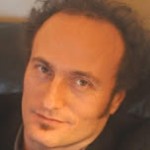 David Nahon is the Director of the Immersive Virtuality (iV Lab) at Dassault Systèmes. The iV Lab builds “concept experiences” with emerging UX technologies, acting as an innovation gateway between Dassault Systèmes brands or industries and the iV ecosystem, bringing value on each side.
David Nahon is the Director of the Immersive Virtuality (iV Lab) at Dassault Systèmes. The iV Lab builds “concept experiences” with emerging UX technologies, acting as an innovation gateway between Dassault Systèmes brands or industries and the iV ecosystem, bringing value on each side.
 Eric Janszen has served as CEO of several venture-backed start-ups, and previously held software engineering, product management and sales executive roles. He is a published author, writing for a range of publications from Harper’s Magazine to Harvard Business Review and authored a book for Portfolio Penguin. He is also the creator of the economics and finance web community and investor group iTulip, Inc. He has a life-long passion for biking and is thrilled to see a decades-old vision of a marriage of VR and bikes to motivate exercise come to life as brilliant VR games created by a uniquely brilliant team.
Eric Janszen has served as CEO of several venture-backed start-ups, and previously held software engineering, product management and sales executive roles. He is a published author, writing for a range of publications from Harper’s Magazine to Harvard Business Review and authored a book for Portfolio Penguin. He is also the creator of the economics and finance web community and investor group iTulip, Inc. He has a life-long passion for biking and is thrilled to see a decades-old vision of a marriage of VR and bikes to motivate exercise come to life as brilliant VR games created by a uniquely brilliant team.
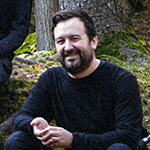 Vincent Morisset is a director and the founder of AATOAA studio. During the last decade, he pioneered interactive videos for Arcade Fire (Neon Bible, Sprawl II, Just a Reflektor). He also directed two feature films, MIROIR NOIR and INNI, a documentary on Sigur Rós. With the support of the NFB, in collaboration with Philippe Lambert, Édouard Lanctôt-Benoit and Caroline Robert, Vincent Morisset directed the award-winning film for computer BLA BLA. His work has been presented at the Museum of the Moving Image, MoMA, Gaîté lyrique, the National Taiwan Museum and at many festivals including Venice, Rotterdam, SXSW and IDFA. Vincent is also the instigator of the Digital Storytelling Manifesto. Way to Go is his latest project.
Vincent Morisset is a director and the founder of AATOAA studio. During the last decade, he pioneered interactive videos for Arcade Fire (Neon Bible, Sprawl II, Just a Reflektor). He also directed two feature films, MIROIR NOIR and INNI, a documentary on Sigur Rós. With the support of the NFB, in collaboration with Philippe Lambert, Édouard Lanctôt-Benoit and Caroline Robert, Vincent Morisset directed the award-winning film for computer BLA BLA. His work has been presented at the Museum of the Moving Image, MoMA, Gaîté lyrique, the National Taiwan Museum and at many festivals including Venice, Rotterdam, SXSW and IDFA. Vincent is also the instigator of the Digital Storytelling Manifesto. Way to Go is his latest project.
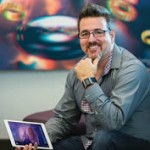 Jeff Hazelton is an “Artrepeneur” and Co-Founder/ CTO of BioLucid, a digital health company that is making health visual. His story starts as a pre-med gone bad, followed by an artistically inspired sailing journey around the world, during which he envisioned how artists could use VR and powerful new digital tools to increase patients’ understanding and empowerment with regards to their own health. By making healthcare visual and immersive, patients can now become more active participants in the prevention and treatment of disease. The advancement of those ideals and creating the 3D technology to make it all possible, is what BioLucid continues to do today. BioLucid provides immersive healthcare experiences to help healthcare providers around the world better communicate with patients, families, and one another. Jeff is also an adjunct professor at the Ringling College of Art + Design in Sarasota, FL.
Jeff Hazelton is an “Artrepeneur” and Co-Founder/ CTO of BioLucid, a digital health company that is making health visual. His story starts as a pre-med gone bad, followed by an artistically inspired sailing journey around the world, during which he envisioned how artists could use VR and powerful new digital tools to increase patients’ understanding and empowerment with regards to their own health. By making healthcare visual and immersive, patients can now become more active participants in the prevention and treatment of disease. The advancement of those ideals and creating the 3D technology to make it all possible, is what BioLucid continues to do today. BioLucid provides immersive healthcare experiences to help healthcare providers around the world better communicate with patients, families, and one another. Jeff is also an adjunct professor at the Ringling College of Art + Design in Sarasota, FL.
 Stuart White started his career in the camera department, working as a clapper loader, camera operator and DOP. Fifteen years ago he transitioned into motion control programming at a company that had some Quantel gear and an SGI workstation. Ever since then, he’s been hooked on digital VFX and for the last twelve years has been the Head of 3D and VFX Supervisor at Fin Design + Effects in Sydney, Australia working primarily on TVCs.
Stuart White started his career in the camera department, working as a clapper loader, camera operator and DOP. Fifteen years ago he transitioned into motion control programming at a company that had some Quantel gear and an SGI workstation. Ever since then, he’s been hooked on digital VFX and for the last twelve years has been the Head of 3D and VFX Supervisor at Fin Design + Effects in Sydney, Australia working primarily on TVCs.
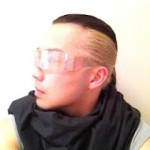 Ben Tan is the Technology and Innovation Director at Digital Arts Network, Sydney, Australia. He is a software developer, musician and occasional artist. He started drawing and playing piano from a young age, and was introduced to programming when he was 11. Unhappy with being constantly forced to play classical music written centuries ago, he decided he wanted to be a creative person and make and invent new things. Fast forward to the future, and he has worked in the software industry for over 9 years and has had experience with a wide range of technologies. These days he works on innovative and creative tech solution, and constantly has his finger on the pulse of all things digital.
Ben Tan is the Technology and Innovation Director at Digital Arts Network, Sydney, Australia. He is a software developer, musician and occasional artist. He started drawing and playing piano from a young age, and was introduced to programming when he was 11. Unhappy with being constantly forced to play classical music written centuries ago, he decided he wanted to be a creative person and make and invent new things. Fast forward to the future, and he has worked in the software industry for over 9 years and has had experience with a wide range of technologies. These days he works on innovative and creative tech solution, and constantly has his finger on the pulse of all things digital.
